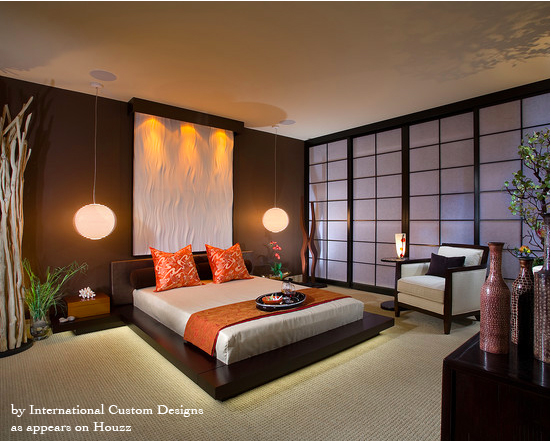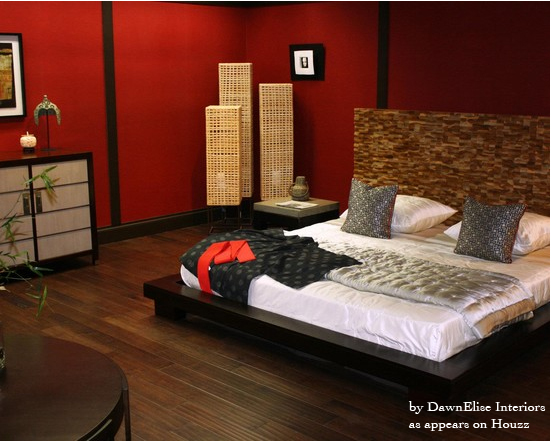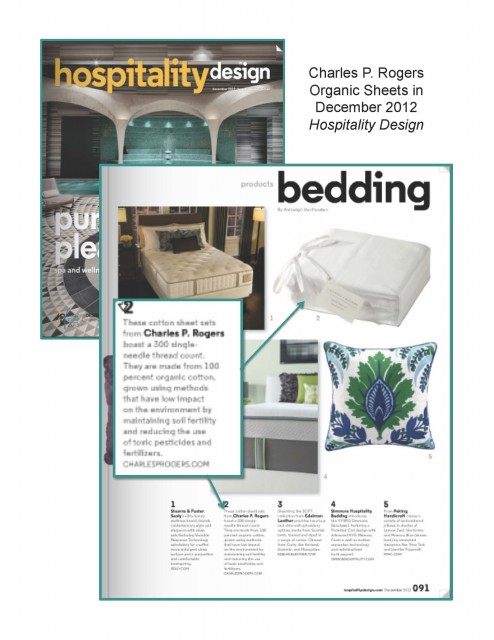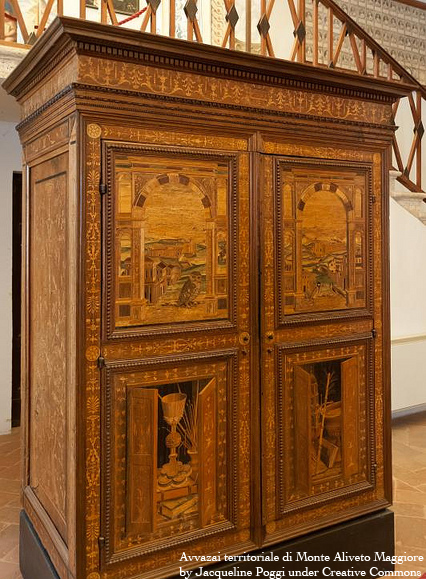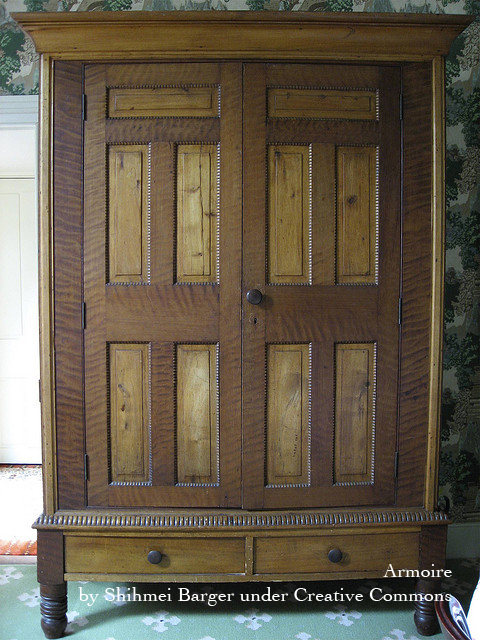Category Archives: Things We Like
Things We Like: Asian Inspired Bedroom Design
Post by Kyle St. Romain.
Asian inspired design embodies most of the traits I look for in a bedroom: minimalistic furnishings, clean lines, and an overall feeling of tranquility. While Asian inspired design can take some careful planning to pull off, especially when you’re designing a bedroom, the rewards can be bountiful.
To help you achieve Zen in your bedroom, I’ve put together my top five cornerstone elements of Asian design.
1. Asymmetry
Several weeks ago I discussed the different ways to achieve balance, which is one of the main principles of design. To recap, the three types of balance are: Symmetrical, Asymmetrical, and Radial. Asymmetrical can be difficult to implement, but it creates the most visually interesting space.
A common example of asymmetrical design in the bedroom is the use of differing nightstands. When planning an Asian inspired bedroom, you may try to include a single nightstand on one side of the bed and an iconic sculpture (e.g., Buddha), or decorative lamp on the other You may also use two of the same nightstands, and place different objects on top of either.
2. A Touch of Nature
Asian inspired design almost always includes natural elements, such as the use of stone and wood for your furnishings and floors. A natural wool rug can also be a nice addition to an Asian themed bedroom. While it is against the general principles of Feng Shui to include living plants in the bedroom, a small plant in a large bedroom may be perfectly acceptable; it all depends on your particular space. Orchids and bamboo are two examples of smaller plants that you can incorporate in your Asian inspired bedroom.
3. Chinoiserie Furniture
Chinoiserie is the French word for “Chinese-esque,” and represents a style of furniture that emerged in France around the 18th Century. Often Chinoiserie furniture comes in dark lacquered colors with painted decorative scenes. Replicas should be easy enough to come by, and the sky is the limit if you’re planning to use real antiques. When selecting furniture for your Asian inspired bedroom, aim to keep it simple. This furniture tends to be very ornate, and you can quickly overdo it and make your bedroom feel busy.
4. Clean Lines
Clean straight lines, coupled with circular décor are what will help tie the look of your room together. Rectangular platform beds, and long straight furnishings will help keep your eyes on level. To keep the look interesting, you can include circular motifs throughout the room. The circle is an important symbol in Japanese culture, and is associated with Zen and enlightenment. Circular mirrors and sculptures are a great way to spice up the straight lines of your bedroom.
5. Minimalistic
Asian inspired bedrooms imbue a sense of minimalism. An uncluttered bedroom is essential to capturing the serenity that you should feel while in your bedroom. This is a prime example of, “less is more.” It can be easy to go overboard with purchasing interesting objects to decorate your bedroom with, but think of this as an exercise in self-restraint. If you can follow this singular rule, you’ll be well on your path to enlightenment!
These are just a few of the major points for designing an Asian themed bedroom, and the possibilities are almost limitless. The Asian cultures are diverse, and you may either choose to encompass a sort of melting pot of Asian design, or stick to one country or culture exclusively. Most importantly, designing an Asian themed bedroom should be fun.
What do you think are the essential elements of Asian design? Share your thoughts in the comments below.
Things We Like: CPR and The Heart Truth
Post by Kyle St. Romain.
Charles P Rogers is off to a great start in 2013. Today, I’d like to inform our readers here on the Charles P Rogers blog of our support for a foundation called: The Heart Truth.
The Heart Truth works to raise awareness about heart disease for women. In fact, heart disease is the number one killer amongst women, accounting for 54 percent of all deaths. This number is up from 37 percent since 1997, and the Heart Truth works to raise awareness and prevent heart disease from claiming so many victims. For more information about the organization and what you can do to get involved, check out the Heart Truth online (http://www.hearrtruth.gov).
To help support this important cause, Charles P Rogers has donated a King Size, limited edition, red leather bed that will be auctioned on eBay between February 1, 2013 and February 10, 2013. The winning bid will be announced on February 14, 2013 – making for a memorable Valentine’s Day. All the proceeds raised from the auction of the bed (and the other items auctioned for the Heart Truth) will be used to support the Heart Truth’s on-going efforts, directly.
While the auction is still several weeks away, a link will be posted on Heart Truth’s website in the coming days with all the information about this fundraising event. House Beautiful will also provide information about this event in its February 2013 issue. You can also learn more about the Heart Truth right here on Charles P Rogers’ domain, by clicking the preceding link.
If you know of anyone who may be interested in this event, we ask that you please share the information above. Armed with knowledge, we can fight back against heart disease.
Things We Like: Hospitality Design Featured Our Organic Cotton Sheets
Post by Kyle St. Romain.
First off, I’d like to wish all the readers here at the Charles P Rogers Blog a Happy New Year! 2013 is going to be the best year yet! But before we can get started with the new, there is one important piece of news leftover from 2012 that we, at the Charles P Rogers blog, want to share with you.
In the December 2012 edition of Hospitality Design (p. 91), Charles P Rogers’ organic cotton sheets were once again featured as a comfortably green bedding choice; ideal for both home and hotel use. If you have yet to discover Charles P Roger’s organic cotton sheets, it’s about time you did.
Made with 100 percent organic cotton, our organic sheets are as comfortable as they are good for the environment. The cotton is grown using low impact farming techniques, which helps maintain soil fertility while reducing the amount of toxic chemicals sprayed onto the earth. Also, the use of natural farming methods means there aren’t any harmful pesticides and fertilizers found within your sheets, which can be a huge benefit for health conscious consumers and people with chemical sensitivities.
Finally, Charles P Rogers’ organic cotton sheets sheets are constructed with 300 single needle thread count and do not use ply yarns. This type of construction is the perfect balance between durability and comfort; two qualities you have likely come to expect from all of Charles P Rogers’ products.
If you’re resolving to live healthier and more environmentally conscious this year, consider organic bedding. Not only will you sleep better knowing you’re helping preserve your planet, you’ll also sleep better tucked snuggly under a fresh set of luxurious sheets.
Things We Like: Balanced Bedroom Design
Post by Kyle St. Romain.
One of the most fundamental concepts of interior design is balance. Balance can be achieved in one of three ways: symmetrically, asymmetrically, or radially. Regardless of which type of balance you aim to create, the primary goal of balancing a room is to equally distribute the visual weight of the objects within the space. Size and shape aren’t the only factors that influence the weight of an object; shape, color, pattern, brightness, and texture also play important roles in achieving balance.
Symmetrical balance is typically used when designing formal spaces, where each side of the room is equally split and weighted with your chosen décor. To achieve symmetry, designers often use identical furnishings on both sides of the room, though not always. A bedroom with matching nightstands and table lamps on both sides of the bed is a common example of symmetrical balance. While symmetrical balance is usually easier to achieve, especially if you’re purchasing new furniture for a square or rectangular room, it can be difficult to create a room that is both symmetrically balanced and visually interesting at the same time.
Asymmetrical balance, which is often considered less formal than symmetrical balance, can be a little more involved to execute properly. Instead of the room being split into mirror images, asymmetrical balance uses different furnishings and décor that roughly equate in terms of their visual weights. For example, you may have a living room designed with a large sofa on the right and two smaller chairs across from it. In this example, the two smaller chairs are used to balance out the larger sofa. While individual tastes vary, I find that asymmetrical balance is the most visually interesting, albeit a bit harder to do right.
One of the hardest parts about creating an asymmetrically balanced bedroom (that looks great) is to make the design appear effortless. Asymmetrical design can require a lot more thought, but you don’t want the room to convey that extra work to its viewers. An example of asymmetrically balance in the bedroom would be where you use a side table on one side of the bed and a mirror on the other. The trick is to make it look right, and appear symmetrical at first glance. Asymmetry can also save you money, especially if you’re buying used furniture or antiques that might be difficult to buy in matching sets.
Radial balance is the third type of balance, and is achieved by arranging furnishings around a central focal point. A common example is a circular dining room table surrounded by chairs. Unless you have a custom-shaped mattress, radial balance isn’t commonly used in bedroom design, except maybe when arranging wall-hanging items or in bedrooms with a lot of space and a seating area. You may also aim to balance your bedroom radially, with how you arrange your larger bedroom furnishings, e.g., you wouldn’t want to put your dresser, chest of drawers, and bookcase all in the same corner of the room – you’d spread them out around the bed.
The best way to understand balance is to look at examples of what other people have done. Houzz has several excellent channels that feature designs utilizing these three types of balance. The following links are provided to show you examples of how other designers utilize symmetrical balance, asymmetrical balance, and radial balance in their space.
What do you think: Do you prefer perfect symmetry or an asymmetrical bedroom? Let us know in the comments below.
Things We Like: Bedroom Armoires
Post by Kyle St. Romain.
One of my favorite pieces of bedroom furniture, apart from the bed itself, has to be the armoire. Stately, solid, beautiful, and functional, these handcrafted (often antique) works of art have been an integral component of a well-furnished bedroom for hundreds of years. Armoires are similar to what we think of as dressers, but with a few notable differences: armoires are taller than they are wide, do not include a mirror (though some newer armoires may have mirrored paneling on the cabinet doors), and feature a large, two-door cabinet that you can hang clothes inside of (dressers contain only drawers).
Armoires were borne out of necessity, since closets weren’t common in homes until recently. The word armoire originates from the Latin word “armorium,” which was a chest used by Roman soldiers to store their arms. The modern day armoire was first developed in France during the early 1500s, and quickly became cherished family heirlooms used to store valuables (mostly textiles).
You can read an interesting piece about armoires from the Nov. 19, 1985 edition of the Dispatch, here.
Armoires were very popular in the United States during the 1990s. Not wanting their bulky television set to be on permanent display, many households purchased oversized armoires—often high dollar antiques—to hide their bedroom electronics. Today, ultra-thin LED televisions and wireless components have made hiding technology much less of a chore, which has brought down the market premium on antique armoires making them more affordable than they once were.
While you aren’t likely to be storing a television inside armoire today, they remain very versatile pieces of furniture that can serve as the focal point of your bedroom. Whether you need additional space to store your clothes, linens, or books, armoires still have a place in the modern home. Best of all, they come in almost unlimited shapes, styles, and sizes so you’re sure to find one that fits your bedroom design. Construction methods have also evolved, making armoires much easier to move (in pieces) than earlier armoires that could only be moved as a complete unit.
You can see some more armoire eye candy over at Houzz.
How do you, or would you put an armoire to use in your bedroom? Share your ideas in the comments below.

